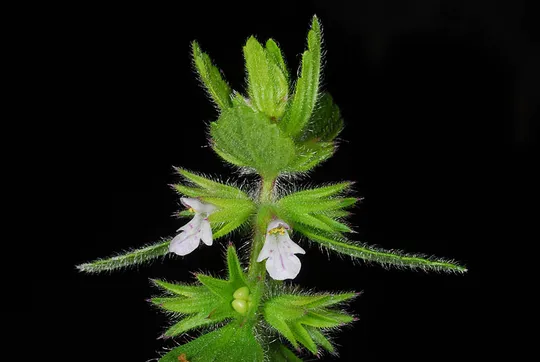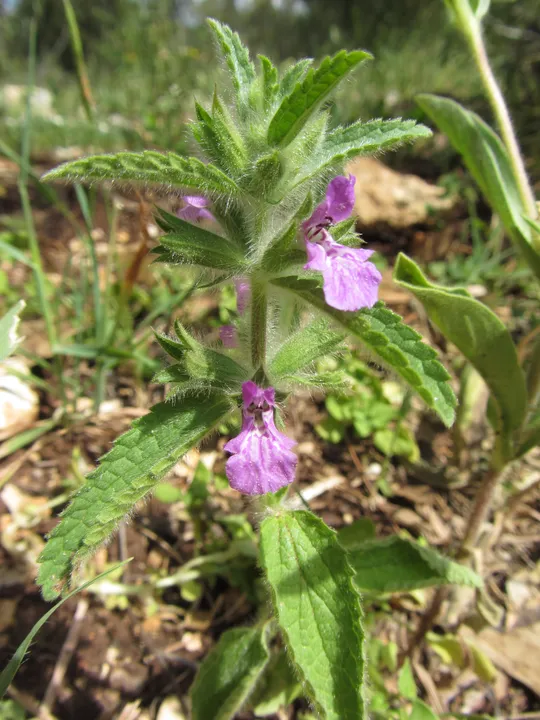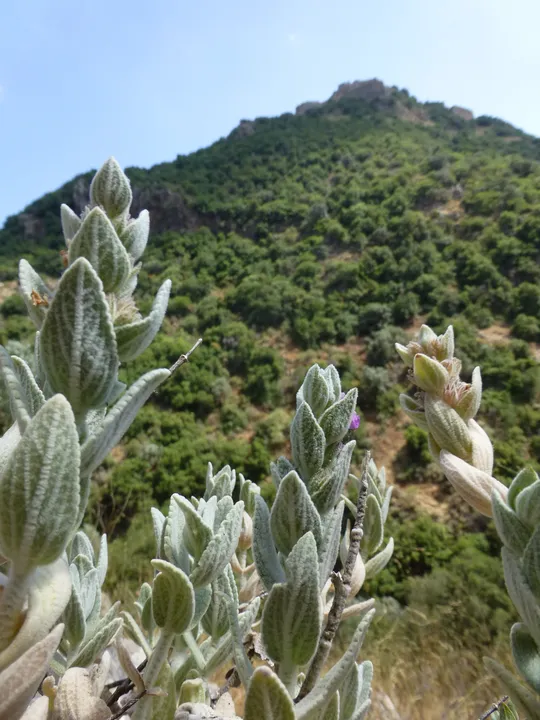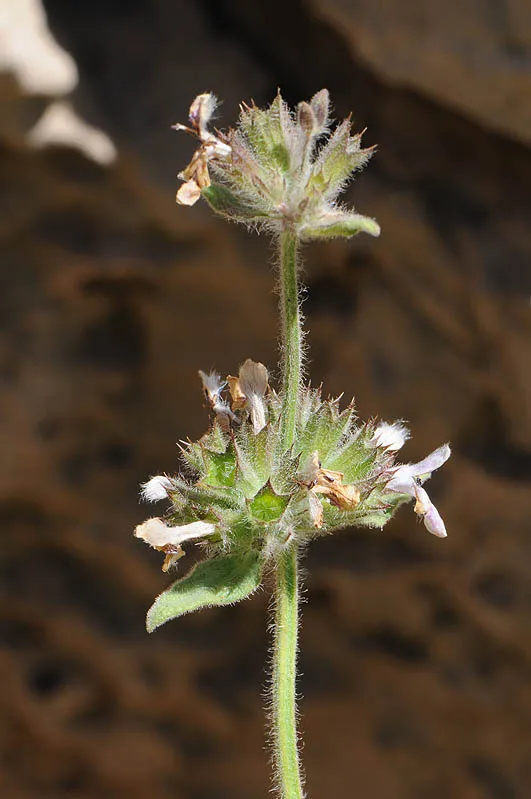Longspike Hedgenettle, Long-spiked Woundwort
Stachys longispicata
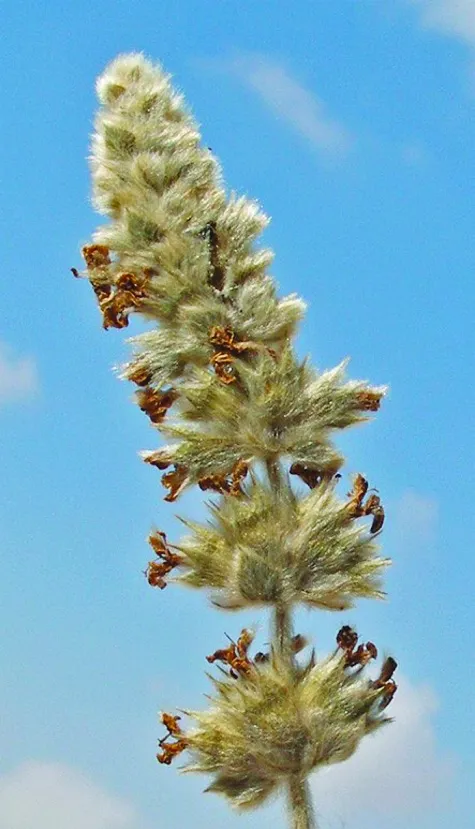
Stachys longispicata grows in the Hula Valley, Upper Galilee, Golan and Kinarot Valley (upper Jordan Valley) regions. It is common only in the Hula Valley; in the remaining regions, it grows only the fringes close to the Hula Valley. In the Upper Galilee, it was once found at Kfar Gil’adi and Nebi Yosha; in the Golan, it grows only in streams descending to the Hula Valley (En Shamir, en Notera, Wadi Shuah, Gilbon Stream). S. longispicata is rare in the Kinarot Valley, and was collected at only two sites the upper Jordan Valley. It is apparently extinct in the Jezreel Valley, where it was collected in 1923. The Flora Palaestina also has a record from Samaria.
At the sides of ditches, marshes and streams with flowing clear water.
For the genus – see Stachys arvensis.
Stachys longispicata belongs to the “spectabilis” sub-section in the genus Stachys. Most of the species in the group are aquatic, and the closest taxa to it systematically and morphologically are S. viticina and S. spectabilis. S. viticina can be told apart from S. longispicata by its multi-flowered whorls that form an inflorescence that is composed of separated whorls, 2-3 cm wide. These traits are highly variable in the field. S. spectabilis is an extremely rare species growing in the Dan Valley region in northern Hula Valley. It differs from S. longispicata by the size of its calyx, which is 6-7 mm long in S. longispicata and 8-11 mm long in S. spectabilis and ripens slowly, while its teeth remain erect. The upper labellum of the corolla of S. longispicata has a constriction that is missing S. spectabilis.
The Flora of Turkey provides different properties to distinguish between the two species than Flora Palaestina: S. spectabilis has many flowers in each whorl and its calyx is much less hairy compared to S. longispicata. The calyx size according to them (6-9 mm) is almost identical for both species.
Drainage operations and the expansion of cultivated areas, together with the general decrease in the number of habitats with clean water in the north, led to the extinction of Stachys longispicata populations and its disappearance from sites where it was previously found.
Stachys longispicata habitats should be preserved, and cattle should be kept away from the water bodies in which it grows; a sufficient supply of fresh water should be ensured to preserve these water bodies.
The distribution area of Stachys longispicata is in the Middle East is southern and eastern Turkey, northern Iraq, Syria, Lebanon and northern Israel.
Stachys longispicata is an aquatic plant whose habitat in Israel is disappearing. Its distribution in Israel is northern peripheral. Since the 20th century, it has become extinct in at least two regions and from a few sites.
The differences between S. longispicata and S. viticina are not clear-cut. S. viticina is common throughout the Mediterranean region in Israel and individuals were found in almost all the populations with both forms of inflorescences, with separated and continuous whorls. As a rule, the continuous inflorescence is relatively much more common in Hula Valley populations. If it turns out that the S.longispicata is not a separate species, it should be removed from the list of red plants in Israel.
Current Occupancy Map
| 1000 squre meter pixel | 5000 squre meter pixel | 10000 squre meter pixel | |
|---|---|---|---|
| number of observations | 0 | 0 | 0 |
| in total pixels | 0 | 0 | 0 |
| Family | Lamiaceae |
| Classification | On the endangered species list |
| Ecosystem | Mediterranean humid |
| Chorotype | Eastern Mediterranean and Western Irano – Turanian |
| Conservation Site | Nuhela Springs |
| Rarity |
1
3
6
|
|---|---|
| Vulnerability |
0
3
4
|
| Attractiveness |
0
0
4
|
| Endemism |
0
0
4
|
| Red number |
1
3.7
10
|
| Peripherality | N |
| IUCN category | DD EW EX LC CR EN VU NT |
| Threat Definition according to the red book | Vulnerable |
 Based on:
Based on:
